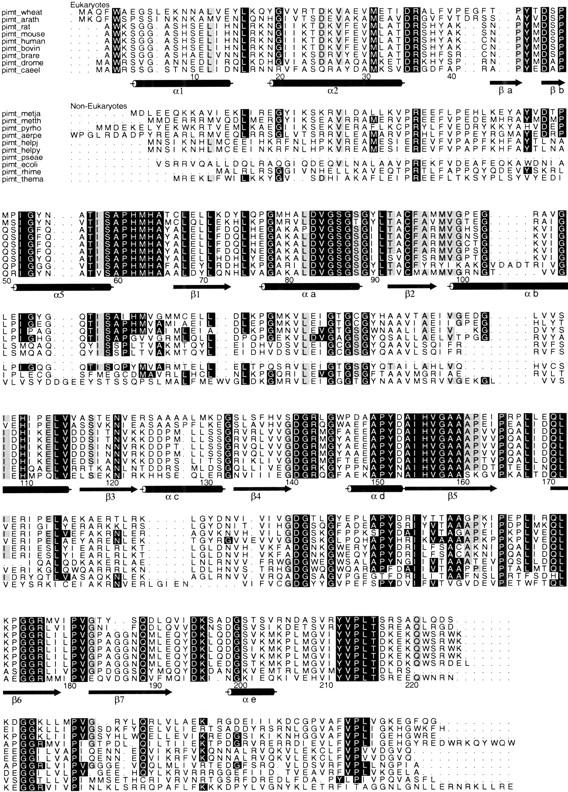Fig. 4.

Multiple sequence alignment of PIMTs. Eukaryotic and noneukaryotic sequences were aligned using the program PILEUP from the GCG Wisconsin Package. The ALSCRIPT program (Barton 1993) was used to prepare the figure. Sequence numbering and the secondary structure designations correspond to the HPIMT sequence (pimt-human). The secondary structure labels correspond to those used for the TMPIMT structure (Skinner et al. 2000). Conservation analysis was based only on eukaryotic residues. Residues completely conserved among these eukaryote sequences have a black background. Residues conserved in all but one of these eukaryotic sequences have a gray background. Noneukaryotic residues that share the eukaryotic residue conservation are indicated the same way. The sequences used were pimt-wheat: Triticum aestivum, pimt-arath: Arabidopsis thaliana, pimt-caeel: Caenorhabditis elegans, pimt-drome: Drosophilia melanogaster, pimt-rat: Rattus norvegicus, pimt-mouse: Mus musculus, pimt-bovin: Bos taurus, pimt-human: human, pimt-metja: Methanococcus jannaschii, pimt-metth: Methanobacterium thermoautotrophicum, pimt-pyrho: Pyrococcus horikoshii, pimt-aerpe: Aeropyrum pernix, pimt-helpj: Helicobacter pylori j99, pimt-helpy: Helicobacter pylori, pimt-pseae: Pseudomonas aeruginosa, pimt-ecoli: Escherichia coli, pimt-rhime: Rhizobium meliloti, and pimt-thema: Thermotoga maritima.
